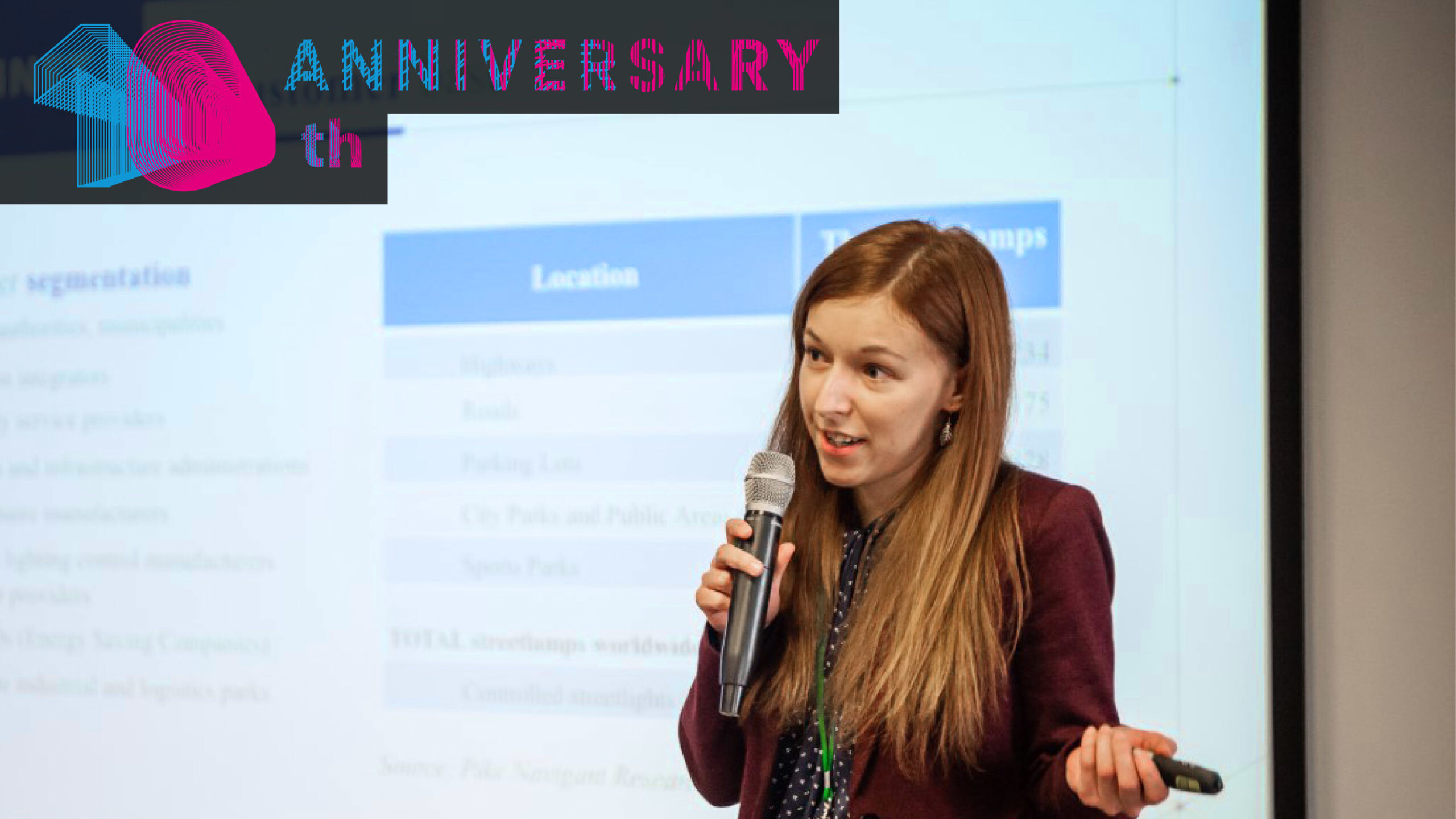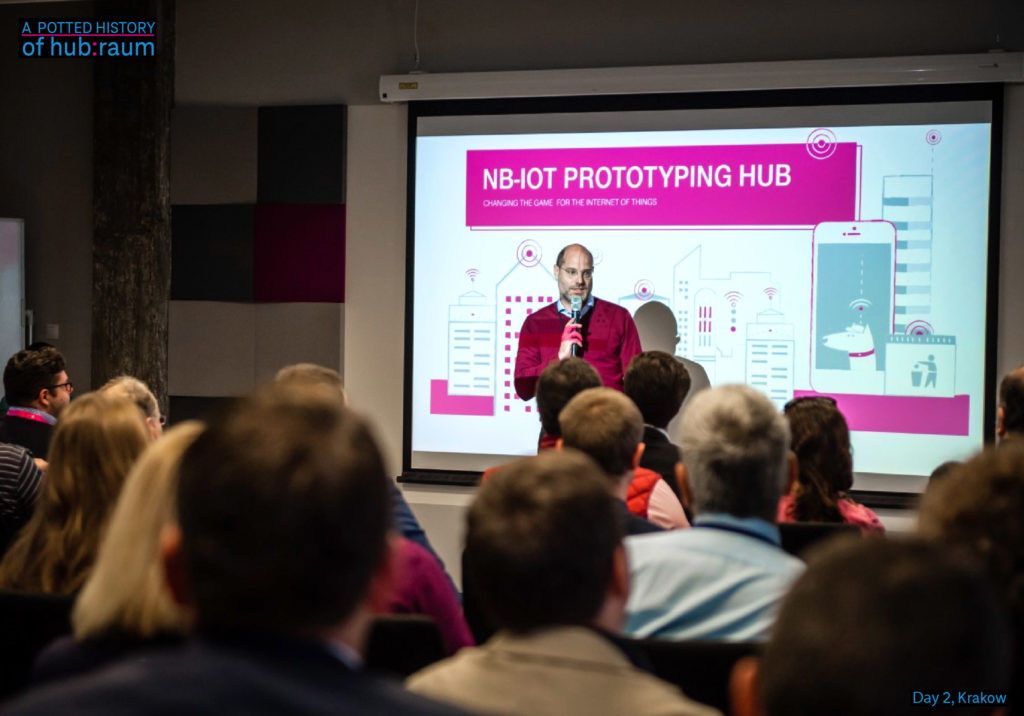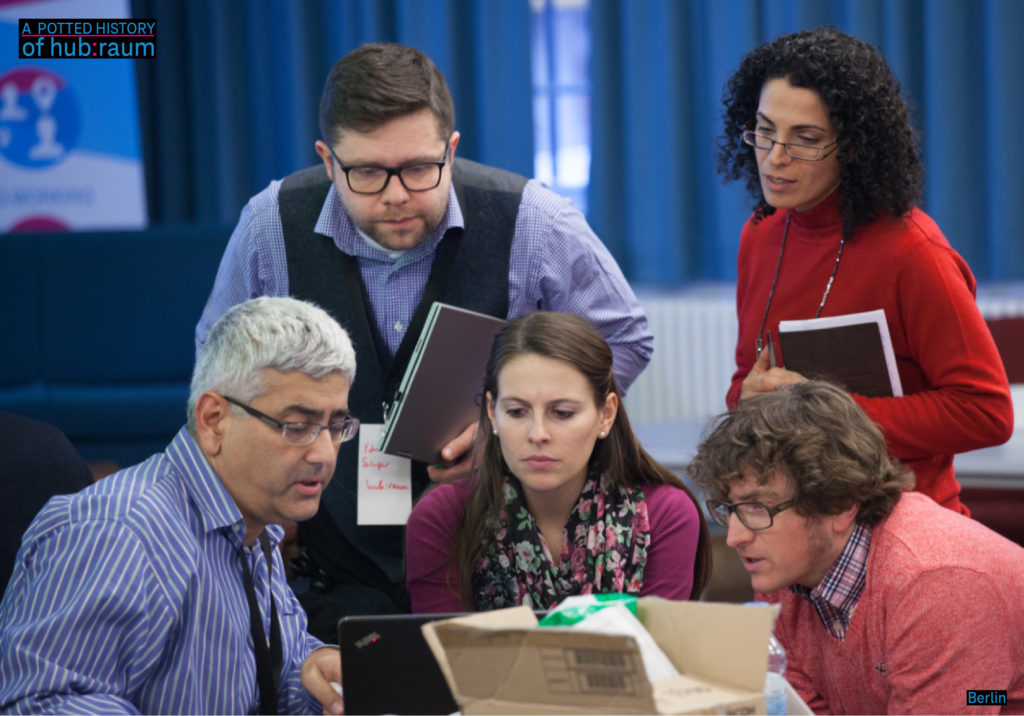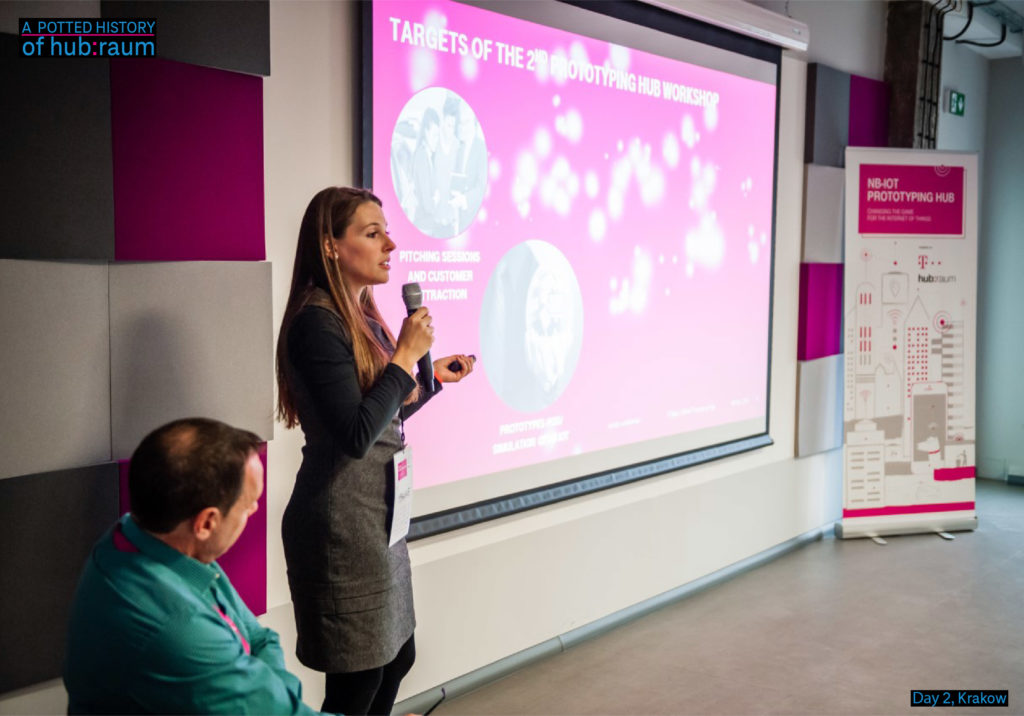This May marked ten years of hubraum! To celebrate the occasion, we’re compiling a potted history: the milestones that defined hubraum, year by year. Our fourth chapter focuses on a year which felt similar to now: when there was a lot of excitement and anticipation surrounding a brand-new sort of technology that people felt could change everything (much as there’s a similar feeling around the Metaverse at the moment). You’ve guessed it: the year was 2017 and the only thing anyone could talk about was NB-IoT.
Between 2016 and 2017, hubraum ran the Narrowband IoT Prototyping Hub, a program dedicated to NB-IoT early access across its campuses in Berlin and Krakow. 24 companies partnered with us on this and we hoped that approximately half of these companies would deliver a working prototype at the end of the program. Imagine our delight when finally 19 startups did so — an astonishing 79% of those we’d enrolled.
Perhaps this result can be partially attributed to how much excitement there was surrounding NB-IoT back then, which enjoyed a similar buzz in 2017 as the metaverse does now. So did NB-IoT live up to the hype? And how smoothly did hubraum’s first ever prototyping program go? We spoke to Roman Duzhyk, Program Manager at hubraum Krakow and Wojciech Pawlak, Business Development Manager at hubraum Krakow, for the inside scoop.
The important thing you have to know about NB-IoT in 2017, Wojciech explains, was that it was a brand-new technology. Roman tells us that “Deutsche Telekom wanted to create an industry ecosystem which would enable startups, B2B partners and customers to develop their first NB-IoT applications. That’s what we started to do back then”.
There was also a huge amount of excitement surrounding NB-IoT — “Back in those times, there was an expectation that IoT would become a huge business with more than 20 billion connected devices by 2020 worldwide,” Roman explains. He adds that there was a similar expectation for NB-IoT – that it would be used on billion of devices within three to five years.
“Telecom companies wanted to build around IoT new businesses and narrowband IoT as a tech enabler was a very good fit for that. And their expectation was that this technology would be very fast and used commercially in many countries.” But unfortunately “it did not happen like this.”
There were a few goals behind launching the program. Almost no one used 3G or 4G equipment in their IoT devices at this point, Wojciech says. As such, narrowband IoT was designed in a very specific way to particularly support IoT. “That was the first goal, just to raise developers’ awareness that something like NB-IoT existed and to encourage them to use it.”
The second reason was much more business-orientated. Wojciech explains that to make money, they had to have products. “It was the idea of building a portfolio or ready-to-use products that T-Systems and Deutsche Telekom could sell.”
But what was – and is – so great about NB-IoT? One key advantage, Wojciech explains, is that it saves a lot of energy, so NB-IoT enabled devices can operate for five-ten years on a single battery, which makes them incredibly useful for devices which are difficult to reach. “For example, a smart water meter. Or humidity or corrosion meters or sensors which are installed inside a concrete construction. You simply put the sensor at the construction face, cover it fully with concrete and forget it and it still works.”
At this point, Roman interjects. Another huge advantage is penetration or indoor coverage, which is a 20 dB better link budget compared to GPRS. “Usually when you have a mobile phone, it does not work in cellars or places with low signal because of the thick walls or concrete. With NB-IoT connectivity you have a better penetration for remote and hard to reach locations, and even underground to an extent.” Narrowband IoT networks provide good coverage to up to two metres under the ground, Wojciech tells me.
There was also a huge benefit for the service provider. Explained simply, a base station is where cellular antennas are placed to provide mobile coverage for customers. With NB-IoT, up to 100,000 devices can connect per base station, because each device has very low data-throughput requirements and because optimized software techniques let base stations communicate with very large numbers of IoT devices. This was very important for the operators because at the time we all expected that we would be flooded in upcoming years with IoT devices.”
In the end, success was local rather than global. One of our success stories from the program was that of Abaro, who ended the program with a minimum viable product — their NB-IoT telemetry devices. “When they applied to be part of the program, Abaro was a company that was just two months old. At the time they came to hubraum, they didn’t have so much as a website. But they were so committed and they had such a strict and strong plan and a clear vision as to what they planned to do, they really used any opportunity offered by this program.”
They took up business opportunities, test capabilities, and access to the chipsets. Perhaps unsurprisingly, only a few years later, they counted some of Poland’s biggest names amongst their clients, with customers like GEOTERMIA PODHALAŃSKA, who are the largest heating company in the country and Veolia Poland.
But is NB-IoT as important and mainstream as was forecast? “Not yet.” Roman says. “It is not in a billion of devices, at least in Europe. It’s gaining momentum, but it will take time still.” The problem was partly one of timing, he explains.
The technology wasn’t rolled out simultaneously, so coverage was patchy — some countries had access to NB-IoT and others didn’t (though stand-alone use cases were possible, where you didn’t need to have a lot). NB-IoT is now widely available and its popularity is growing. But he suggests it shows exactly how wary we should be of trusting hype around new technological developments.
What was the most exciting aspect of running the program? “For me, as a guy with an engineering program it was amazing to collaborate with these teams creating different products for smart water meters, we had very specialised devices to monitor provide monitoring and maintenance of the industrial equipment,” says Wojciech. And what about Roman?
“I think it was about the exclusive access to the new technology provided to startups by hubraum for the first time. We had something very tangible to offer the startups — come, try something new which will be popular very soon. We learned a lot about the technology together with the startups and they learned from us, too. So that was a good thing. It was good vibes with good people.”
In 2015, there was a huge transition — hubraum’s original founder handed over the company to Axel Menneking, who still leads the company today. But what changed? And why was hubraum full of “pirates”? Find out more here.
Or go back in time to 2012, when hubraum was first founded. “It’s still the most interesting place I can imagine working. Nobody continuously innovates in the way hubraum does.” Andreas Dönges has been with us since our very first year. He tells us about how hubraum was born and why it’s so special.





